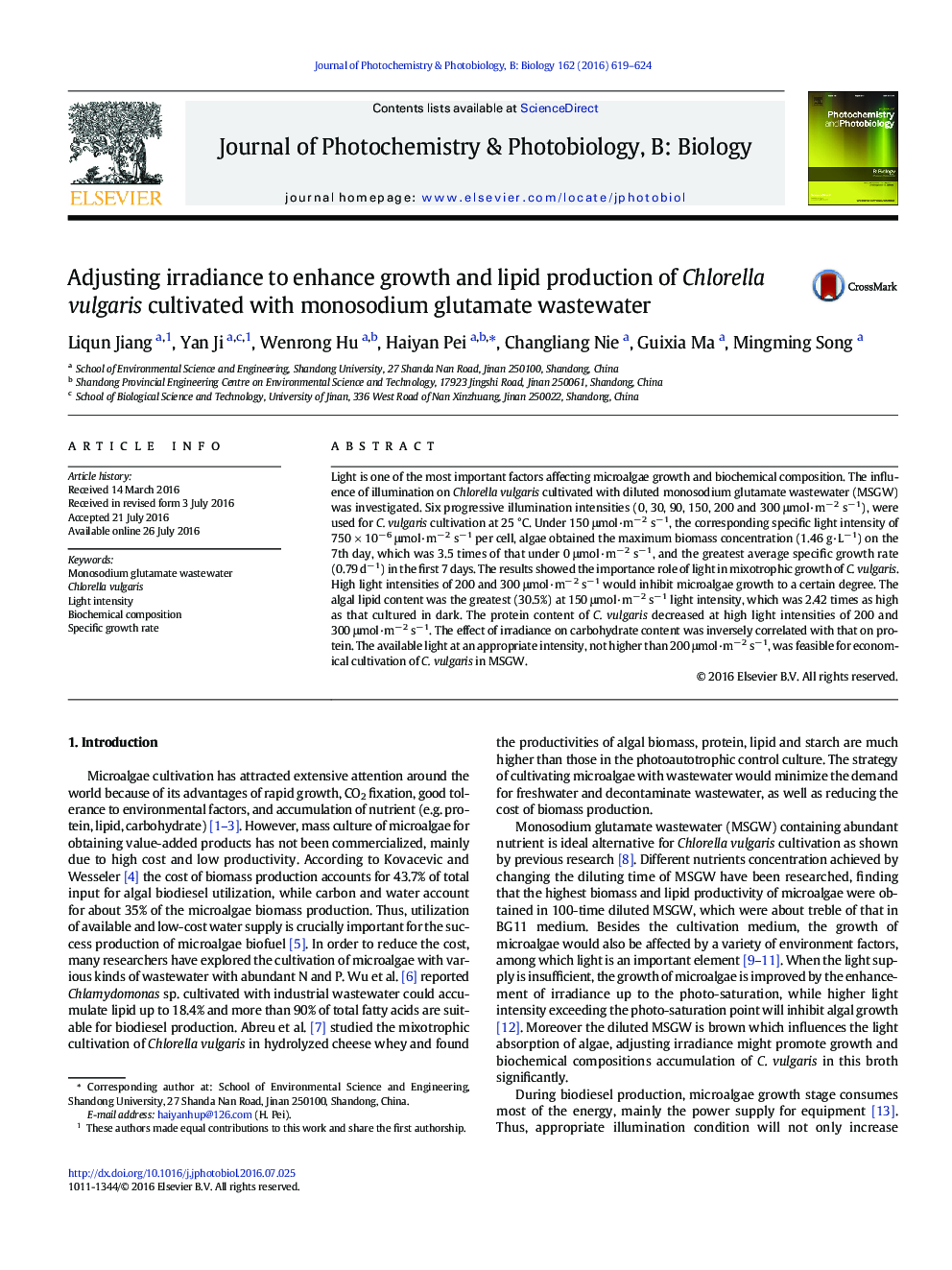| Article ID | Journal | Published Year | Pages | File Type |
|---|---|---|---|---|
| 6493615 | Journal of Photochemistry and Photobiology B: Biology | 2016 | 6 Pages |
Abstract
Light is one of the most important factors affecting microalgae growth and biochemical composition. The influence of illumination on Chlorella vulgaris cultivated with diluted monosodium glutamate wastewater (MSGW) was investigated. Six progressive illumination intensities (0, 30, 90, 150, 200 and 300 μmol·mâ 2 sâ 1), were used for C. vulgaris cultivation at 25 °C. Under 150 μmol·mâ 2 sâ 1, the corresponding specific light intensity of 750 Ã 10â 6 μmol·mâ 2 sâ 1 per cell, algae obtained the maximum biomass concentration (1.46 g·Lâ 1) on the 7th day, which was 3.5 times of that under 0 μmol·mâ 2 sâ 1, and the greatest average specific growth rate (0.79 dâ 1) in the first 7 days. The results showed the importance role of light in mixotrophic growth of C. vulgaris. High light intensities of 200 and 300 μmol·mâ 2 sâ 1 would inhibit microalgae growth to a certain degree. The algal lipid content was the greatest (30.5%) at 150 μmol·mâ 2 sâ 1 light intensity, which was 2.42 times as high as that cultured in dark. The protein content of C. vulgaris decreased at high light intensities of 200 and 300 μmol·mâ 2 sâ 1. The effect of irradiance on carbohydrate content was inversely correlated with that on protein. The available light at an appropriate intensity, not higher than 200 μmol·mâ 2 sâ 1, was feasible for economical cultivation of C. vulgaris in MSGW.
Keywords
Related Topics
Physical Sciences and Engineering
Chemical Engineering
Bioengineering
Authors
Liqun Jiang, Yan Ji, Wenrong Hu, Haiyan Pei, Changliang Nie, Guixia Ma, Mingming Song,
